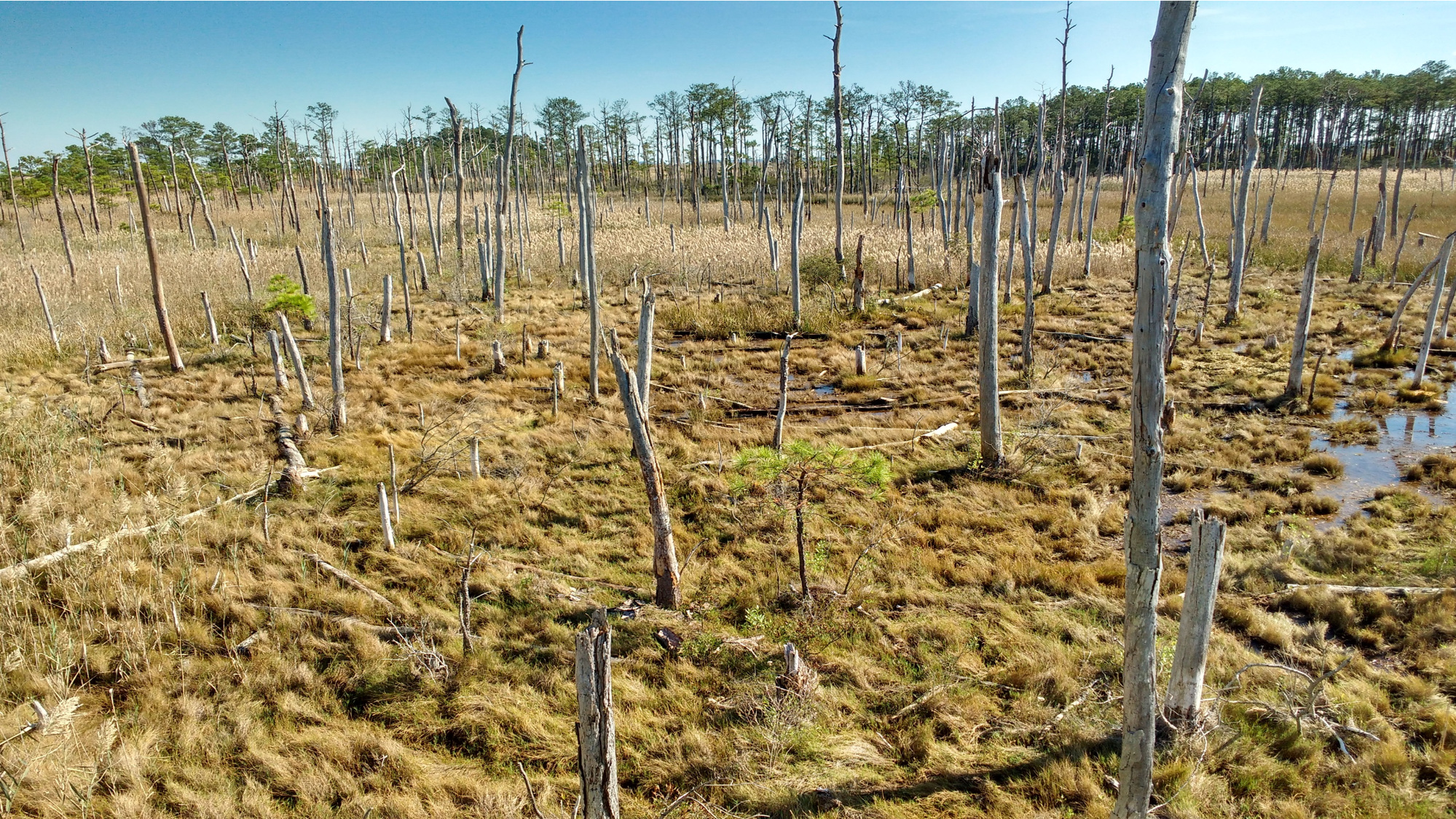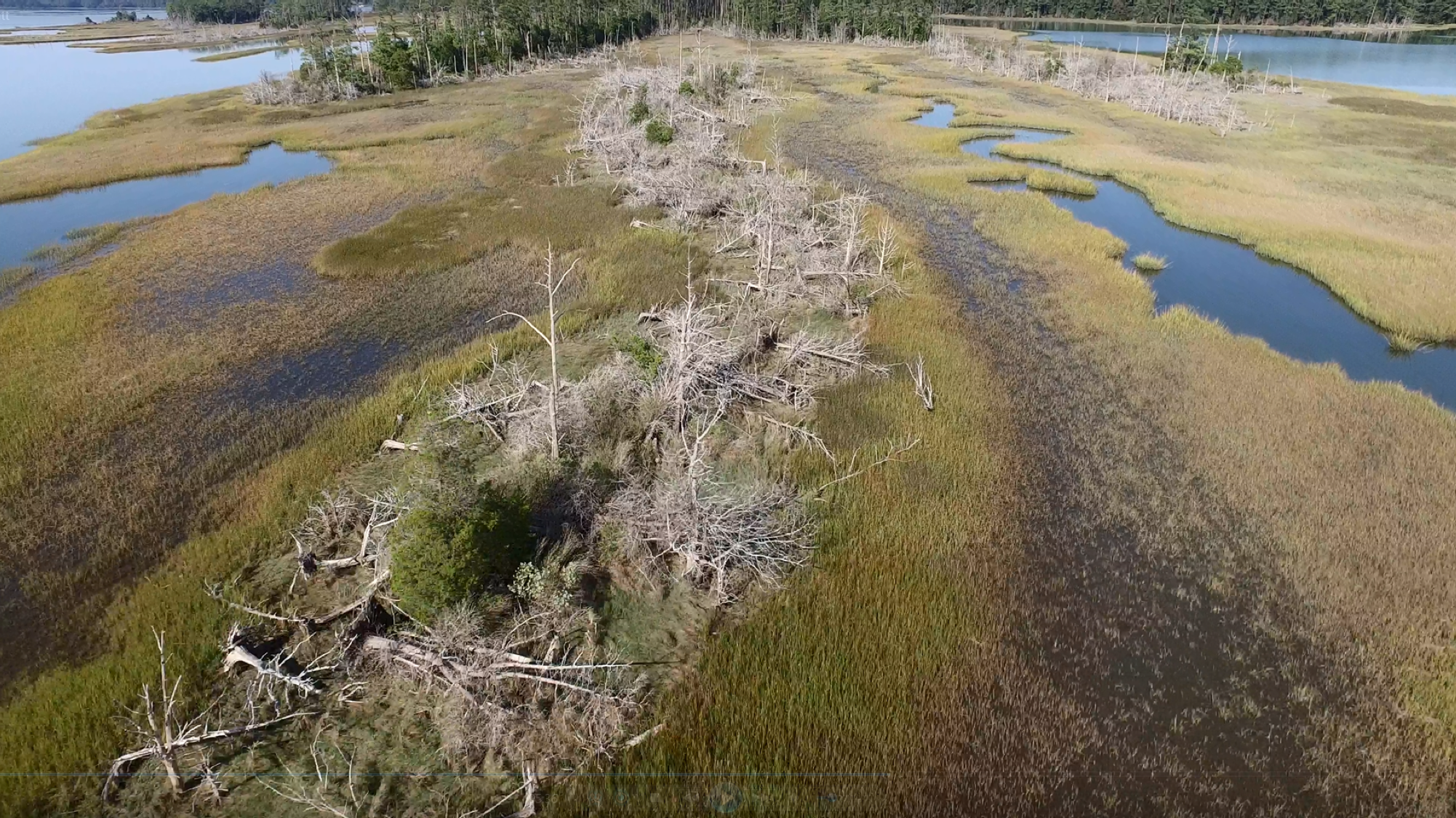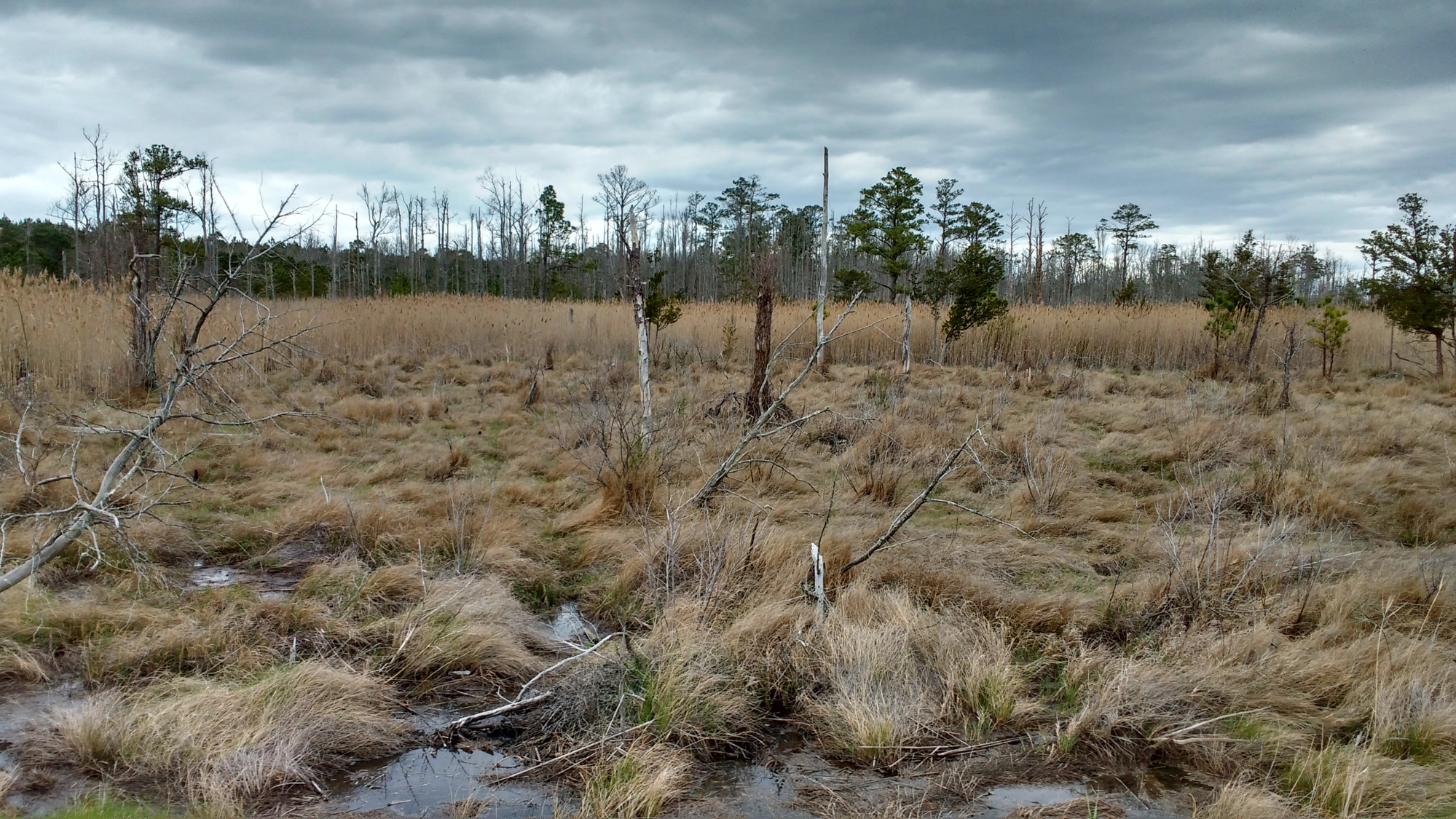Understanding the Rise of Ghost Forests along the East Coast

A quintessential ghost forest in Virginia. Credit: Matthew Kirwan/VIMS
Climate change induced saltwater intrusion has led to “ghost forests” along coastlines around the world. As sea levels rise, coastal forests are transitioning to marsh lands and open water. These areas are characterized by tree trunks bleached from encroaching sea water.
While much attention has been given to how sea level rise will affect urban areas, ghost forests are occurring along many rural parts of the coast, affecting private landowners and farmers. Matt Kirwan, Director of the Geomorphology and Ecology Lab at the Virginia Institute of Marine Science (VIMS), is interested in how upland-to-wetland conversion is already affecting landowners.
Getting into ghost forests
Kirwan is the lead author of a recent review paper published in Nature Climate Change that analyzed over 100 studies from the past five years on land conversion driven by sea level rise.
“I’ve watched this problem over the past 20 years, but I was curious to know what other areas of the world were experiencing it,” Kirwan said. “The Chesapeake Bay is a poster child for the loss of coastal forests and farmland, but it was less clear if it was local or around the world.”
What he found were examples of sea-level-driven land conversion up and down the Atlantic and Gulf coasts.

Ghost forests in Catlett Islands, Gloucester County, VA. Credit: Matthew Kirwan/VIMS
The study found that over 150 square miles of forest have already been converted to marshland since the mid-1800s, and that mid-Atlantic forests are retreating more than twice as fast as they were 150 years ago.
The prevalence of ghost forests has led to many scientists jumping on every facet of the issue, including the rate of sea level rise, salt tolerance of various species, and the impacts of human barriers like levees.
Defending against rising tides
Kirwan explored a number of options that landowners can take to manage and adapt to land conversion. If farmers are willing to embrace the changes, they can plant salt-resistant crops.
Landowners can harvest timber in vulnerable areas to make money on it before it gets bleached. Some researchers speculate that cutting trees early allows for more light into the emerging wetland, encouraging native grasses to grow before invasive Phragmites grasses take over.
Some landowners are already adapting by leasing ghosts forests to hunting groups.
Kirwan noted that while there is a lot of land available for marsh migration, people always say that “we will never let it happen,” as it is hard to imagine people not defending their property.
Next steps

Ghost forest in Northampton County, VA. Credit: Matthew Kirwan/VIMS
While many landowners are already installing barriers, more work needs to be done to understand the efficiency of the barriers and how they affect the environment. “I am interested in what individual landowners can do to prevent their property from being flooded and what impact that has on marsh migration,” explained Kirwan.
At the end of their paper, they note that there will likely also need to be policy incentives. For example, the USDA’s Conservation Reserve Program, a popular easement program for restoring wetlands and other conservation practices, could be modified for adapting to sea level rise.
Kirwan notes that coastal, rural areas tend to be among the most vulnerable sea level rise. They are “the places with the lowest, most poorly-drained land, and they tend to be rural areas where it would be very difficult for governments to build substantial flood control structures,” he said.
He knows that much of sea level rise adaptation will come down to individual landowner decisions. “There are lots of examples around the Chesapeake Bay where people leave low land and move away… That’s already a consequence.”
